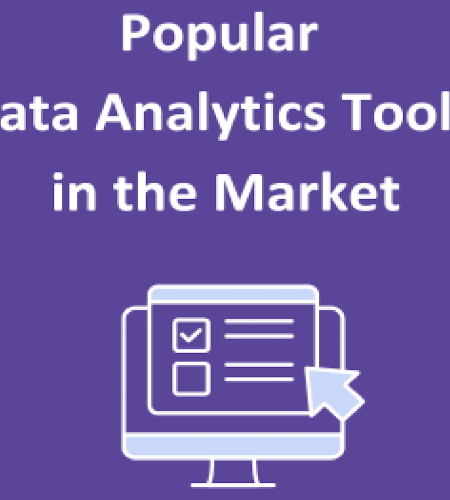With the right tools, you can dominate the world of data analytics and use insights to drive innovation and decision-making. Familiarising yourself with various Data Analytics Tools becomes vital as professionals strive to expand their competence through Data Analytics Training Online. Analysts can derive valuable insights from massive datasets with the help of these technologies, which also simplify the analytical process. This blog discusses popular data analytics tools revolutionising data processing, analysis, and visualisation.
Table of Contents
- Tableau
- Python (with Pandas and NumPy)
- R Programming
- SQL (Structured Query Language)
- Microsoft Excel
- Power BI
- SAS (Statistical Analysis System)
- Apache Hadoop
- Google Analytics
- Conclusion
Tableau
Main Features: Users may build dynamic and shareable dashboards with Tableau’s famous sophisticated data visualisation capabilities. It has a user-friendly drag-and-drop interface that supports multiple data sources, making exploration and analysis a breeze. One of Tableau’s main selling points is the visual storytelling it can create from raw data.
Use Case: Ideal for creating visually appealing and insightful dashboards that facilitate data-driven decision-making.
Python 2 (with NumPy and Pandas)
Key Features: Python has found widespread application in data analytics due to its versatility. Pandas and NumPy are two libraries that expand Python’s data analysis and manipulation capabilities. They supply robust resources for working with data and computation and frameworks for adequate data storage.
Use Case: Data analytics projects can only function with it for preprocessing, data cleaning, and performing complicated data transformations.
R Programing
Key Features: The statistical programming language R is well-known for its powerful data visualisation and analysis features. Data scientists and statisticians love it because of its extensive package ecosystem. Statistical modelling and data manipulation are two areas where R shines.
Use Case: Perfect for intricate statistical modelling, exploratory data analysis, and statistical analysis in general.
SQL (Structured Query Language)
Key Features: Regarding relational databases, SQL is the language of choice for management and manipulation. It facilitates efficient data retrieval, modification, and analysis for database analysts. SQL is an essential tool to query and organise structured datasets.
Use Case: Important for retrieving, altering, and analysing information held in relational databases; hence, primary use case.
Microsoft Excel
Key Features: Regarding data analytics, Microsoft Excel is a classic that will constantly be updated. It allows users to construct charts and pivot tables quickly, has an extensive formula library, and has a user-friendly interface. Excel is user-friendly for analysts of all skill levels.
Use Case: Ideal for simple data analysis, report writing, and exploratory data jobs that require little time.
Power BI
Key Features: Power BI, created by Microsoft, is an analytics solution for businesses that lets users see data visually and share that information with others. It has robust data communication possibilities and works smoothly with other Microsoft programmes. Making dynamic dashboards and reports is a breeze with Power BI’s user-friendly interface.
Use Case: Perfect for investigating data, making interactive reports, and communicating findings to stakeholders.
SAS (Statistical Analysis System)
Key Features: Regarding data management, advanced analytics, and business intelligence, SAS is the software suite to utilise. It provides a full suite of resources for ML, statistical modelling, and data analysis. Businesses that deal with huge amounts of data and require sophisticated analytics frequently use SAS.
Use Case: Popular for usage in government, healthcare, and financial sectors for statistical modelling and sophisticated analytics.
Apache Hadoop
Key Features: Apache Hadoop is a free, open-source software for storing and analysing massive, distributed datasets. It allows a cluster of computers to store and analyse massive volumes of structured and unstructured data. Hadoop plays a crucial role in managing projects involving extensive data analytics.
Use Case: Distributed computing environments benefit greatly from processing and analyzing large-scale datasets.
Google Analytics
Key Features: Google Analytics is a web analytics tool that monitors and provides reports on website traffic. It sheds light on website performance, marketing efficacy, and user behaviour. Google Analytics is an indispensable tool for improving a company’s online visibility.
Use Case: Crucial for measuring the success of digital advertising campaigns, user engagement, and website traffic.
Conclusion
From data processing and analysis to visualisation and reporting, the diverse set of tools covers all bases in data analytics. Because of their unique features and capabilities, different tools are better suited to other tasks and user preferences. Choosing an appropriate selection of tools that complement one another and work in tandem with the analytics team’s expertise and project objectives is crucial. Data analysts can unlock massive databases, turn raw data into valuable insights, and make decisions in the dynamic field of data analytics with the correct tools.

